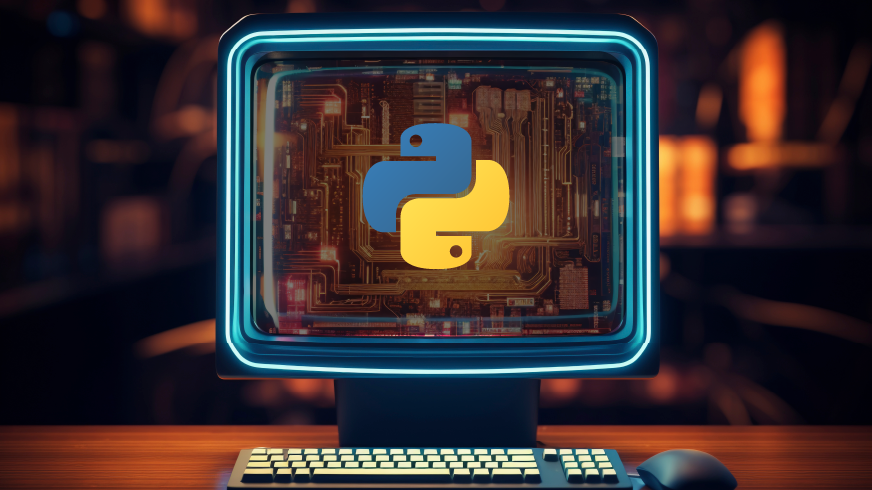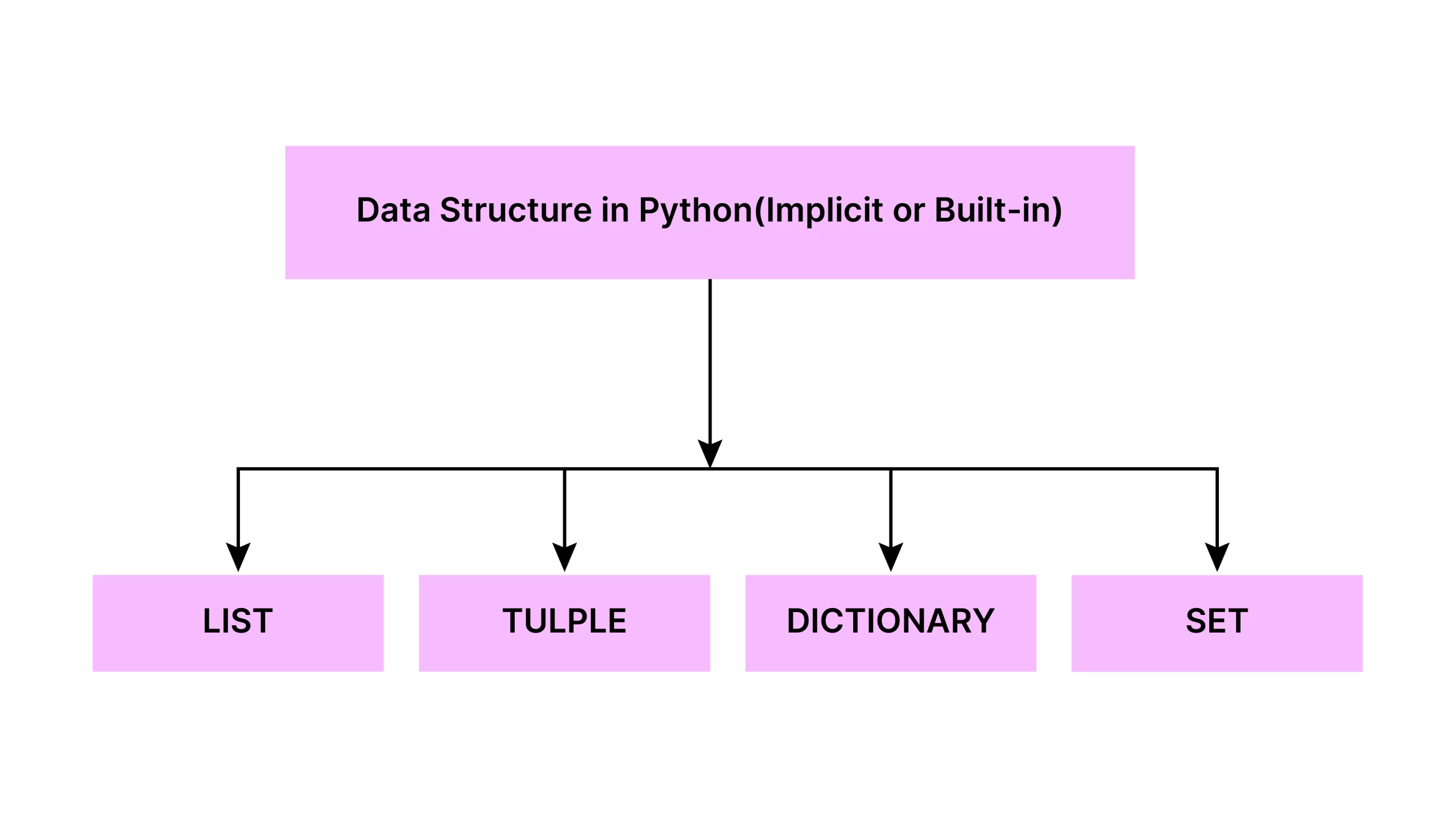 Technology peripherals
Technology peripherals
 AI
AI
 Comprehensive Guide to Python Built-in Data Structures - Analytics Vidhya
Comprehensive Guide to Python Built-in Data Structures - Analytics Vidhya
Comprehensive Guide to Python Built-in Data Structures - Analytics Vidhya
Apr 18, 2025 am 11:43 AMIntroduction
Python excels as a programming language, particularly in data science and generative AI. Efficient data manipulation (storage, management, and access) is crucial when dealing with large datasets. We've previously covered numbers and strings and their memory representation (link to previous article). This article delves into Python's built-in data structures and the distinction between mutable and immutable objects.

Key Concepts
- Python's Strengths: Python's versatility shines in data science and generative AI applications.
- Data Structures Overview: This section explores built-in data structures: lists, arrays, tuples, dictionaries, sets, and frozen sets.
- Lists: Mutable, dynamic arrays capable of holding diverse data types; offering extensive manipulation methods.
- Arrays vs. Lists: Arrays are homogeneous (same data type) and memory-efficient; lists provide greater flexibility with mixed data types.
- Tuples: Immutable sequences; faster and more memory-efficient than lists; ideal for unchanging collections.
- Dictionaries: Key-value pairs; mutable and highly versatile; useful for tasks like counting, reversing, memoization, and sorting complex data.
Table of contents
- What are Python's Built-in Data Structures?
- A. Working with Lists
- List Literals
- List Creation
- Arrays in Python
- Arrays vs. Lists (Dynamic Arrays)
- Reversing Lists with Slicing
- List Traversal Methods
- Lists and Diverse Data Types
- Reversing Lists with
reverse() - The
reversed()Function - In-place Methods
- Replacing Lists vs. Modifying List Contents
- Copying Lists using Slicing
- Copying Lists using
copy() - Copying Lists using
deepcopy() - List Concatenation with the
- Generating Lists with
range() - List Comprehensions
- Nested
ifwith List Comprehensions - Flattening Nested Lists
- Converting Space-Separated Numbers to Integer Lists
- Combining Lists into a List of Lists
- Converting Lists of Tuples to Lists of Lists
- B. Working with Tuples
- Tuple Literals
- Lists vs. Tuples: A Comparison
- Performance: Speed and Memory
- Error Handling
- Returning and Assigning Multiple Values
- Tuple Creation using Generators
- The
zip()Function with Tuples
- C. Working with Dictionaries
- Dictionary Literals
- Nested Dictionaries (JSON)
- Adding Key-Value Pairs to Nested Dictionaries
- Removing Key-Value Pairs from Nested Dictionaries
- Dictionaries as Counters
- Inverting Dictionaries
- Memoized Fibonacci
- Sorting Complex Iterables with
sorted() - Defining Default Values with
.get()and.setdefault() - Merging Dictionaries with
** - Creating Dictionaries with
zip() - Dictionary Comprehensions
- Creating Dictionaries from Existing Dictionaries
- D. Working with Sets
- Set Literals
- Removing Duplicates from Lists using Sets
- Set Operations
-
isdisjoint(),issubset(),issuperset() - Set Comprehensions
- Operations on Frozen Sets
- Frequently Asked Questions
What are Python's Built-in Data Structures?
Data structures organize and store data for efficient access and manipulation. This article covers Python's built-in data structures: lists, arrays, tuples, dictionaries, sets, and frozen sets.

A companion Python notebook (link to notebook) serves as a quick syntax reference.
A. Working with Lists
List Literals
Lists are built-in Python data types storing items of various data types within square brackets [], separated by commas. They are dynamic arrays, meaning their size can change.
(The rest of the content would follow a similar structure, rephrasing sentences and using synonyms to achieve paraphrasing while maintaining the original meaning and keeping the image placement unchanged.)
The above is the detailed content of Comprehensive Guide to Python Built-in Data Structures - Analytics Vidhya. For more information, please follow other related articles on the PHP Chinese website!

Hot AI Tools

Undress AI Tool
Undress images for free

Undresser.AI Undress
AI-powered app for creating realistic nude photos

AI Clothes Remover
Online AI tool for removing clothes from photos.

Clothoff.io
AI clothes remover

Video Face Swap
Swap faces in any video effortlessly with our completely free AI face swap tool!

Hot Article

Hot Tools

Notepad++7.3.1
Easy-to-use and free code editor

SublimeText3 Chinese version
Chinese version, very easy to use

Zend Studio 13.0.1
Powerful PHP integrated development environment

Dreamweaver CS6
Visual web development tools

SublimeText3 Mac version
God-level code editing software (SublimeText3)
 Kimi K2: The Most Powerful Open-Source Agentic Model
Jul 12, 2025 am 09:16 AM
Kimi K2: The Most Powerful Open-Source Agentic Model
Jul 12, 2025 am 09:16 AM
Remember the flood of open-source Chinese models that disrupted the GenAI industry earlier this year? While DeepSeek took most of the headlines, Kimi K1.5 was one of the prominent names in the list. And the model was quite cool.
 Grok 4 vs Claude 4: Which is Better?
Jul 12, 2025 am 09:37 AM
Grok 4 vs Claude 4: Which is Better?
Jul 12, 2025 am 09:37 AM
By mid-2025, the AI “arms race” is heating up, and xAI and Anthropic have both released their flagship models, Grok 4 and Claude 4. These two models are at opposite ends of the design philosophy and deployment platform, yet they
 10 Amazing Humanoid Robots Already Walking Among Us Today
Jul 16, 2025 am 11:12 AM
10 Amazing Humanoid Robots Already Walking Among Us Today
Jul 16, 2025 am 11:12 AM
But we probably won’t have to wait even 10 years to see one. In fact, what could be considered the first wave of truly useful, human-like machines is already here. Recent years have seen a number of prototypes and production models stepping out of t
 Context Engineering is the 'New' Prompt Engineering
Jul 12, 2025 am 09:33 AM
Context Engineering is the 'New' Prompt Engineering
Jul 12, 2025 am 09:33 AM
Until the previous year, prompt engineering was regarded a crucial skill for interacting with large language models (LLMs). Recently, however, LLMs have significantly advanced in their reasoning and comprehension abilities. Naturally, our expectation
 6 Tasks Manus AI Can Do in Minutes
Jul 06, 2025 am 09:29 AM
6 Tasks Manus AI Can Do in Minutes
Jul 06, 2025 am 09:29 AM
I am sure you must know about the general AI agent, Manus. It was launched a few months ago, and over the months, they have added several new features to their system. Now, you can generate videos, create websites, and do much mo
 Build a LangChain Fitness Coach: Your AI Personal Trainer
Jul 05, 2025 am 09:06 AM
Build a LangChain Fitness Coach: Your AI Personal Trainer
Jul 05, 2025 am 09:06 AM
Many individuals hit the gym with passion and believe they are on the right path to achieving their fitness goals. But the results aren’t there due to poor diet planning and a lack of direction. Hiring a personal trainer al
 Leia's Immersity Mobile App Brings 3D Depth To Everyday Photos
Jul 09, 2025 am 11:17 AM
Leia's Immersity Mobile App Brings 3D Depth To Everyday Photos
Jul 09, 2025 am 11:17 AM
Built on Leia’s proprietary Neural Depth Engine, the app processes still images and adds natural depth along with simulated motion—such as pans, zooms, and parallax effects—to create short video reels that give the impression of stepping into the sce
 These AI Models Didn't Learn Language, They Learned Strategy
Jul 09, 2025 am 11:16 AM
These AI Models Didn't Learn Language, They Learned Strategy
Jul 09, 2025 am 11:16 AM
A new study from researchers at King’s College London and the University of Oxford shares results of what happened when OpenAI, Google and Anthropic were thrown together in a cutthroat competition based on the iterated prisoner's dilemma. This was no





